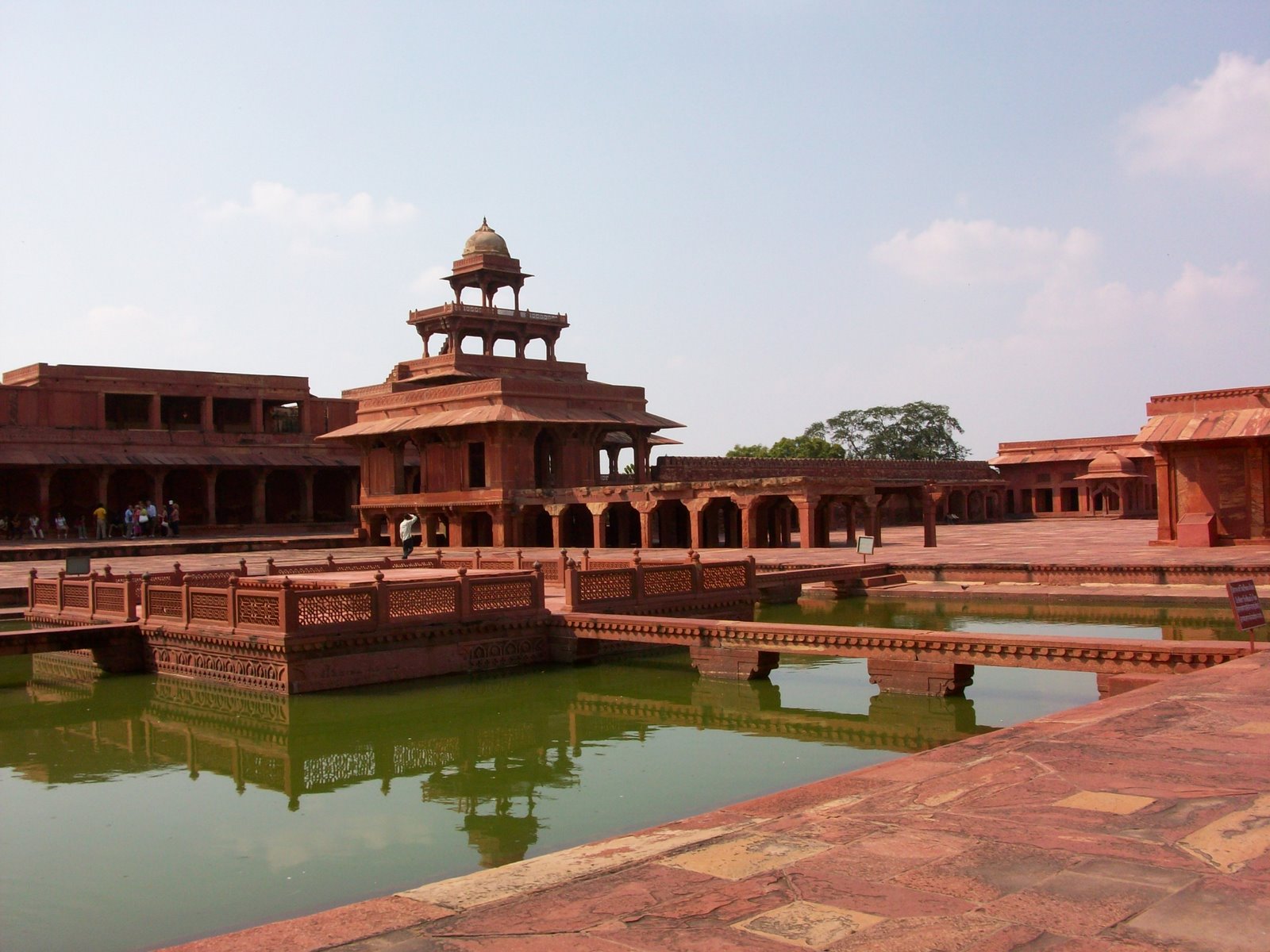Fatehpur Sikri was also the political capital of the Mughal Empire between 1571 and 1585. The dynasty’s treasure, arsenal and other precious belongings were kept in Fatehpur Sikri. Spread over a total area of two miles, Fatehpur Sikri took fifteen long years to be built. Today, this huge monument is one of the architectural marvels of our country with some of the best monuments within its premises. This huge architectural wonder is a major place of tourist interest which reflects a beautiful blend of Hindu and Muslim architectural styles. Fatehpur Sikri is one of the best examples of Mughal architecture. Work on the extensive project – featuring grand palaces, formal courtyards, pools, harems, tombs and a great mosque – began in 1571. A large number of skilled masons and craftsmen worked to their bones on an area that was over two miles long and a mile wide. The main material used for construction was red sandstone, which is available locally. Palace of Five Storeys, and the Buland Darwaza, a massive gate which provides entrance to the complex, it is numbered among the finest specimens of Mughal architecture. It is even arguable that Fatehpur Sikri is the greatest accomplishment of Mughal architecture, surpassed only in reputation.

Fatehpur Sikri tourist attractions
The Diwan-I-Am
journey to the royal palace begins with Diwan-I-Am or the Hall Of Public Audience. This hall was also used for celebrations and public prayers. It has cloisters on three sides of a rectangular courtyard. To the west is a pavilion with the Emperor’s throne. Beautiful jali screen on either sides separated the ladies attending the court.
Diwan-Khana-I-Khaas
To the right is an apparently looking two storeyed building, with corner kiosks, known as diwan-khana-I-khaas or Hall Of Private Audience. On entering it, one finds only a single vaulted chamber. In the centre stands a profusely carved column supporting a collosal-bracketed capital. Four narrow causeways project from the centre and run to each corner of the chamber. It is believed that Akbar’s throne occupied the circular space over the capital and the corners were assigned to the four ministers.
Turkish Sultana’s House
To the left of the Pachisi Board is the Turkish Sultana’s house. The house, as its location at the corner of Anup Talao shows, was a pavilion for repose, attached to the pool. The geometrical pattern on the ceiling is reminiscent of Central Asian carvings in wood.
Daulat Khana-I-Khas
Located in the corner to the left is the emperor’s private chamber. It has two main rooms on the ground floor. One housed Akbar’s library while the larger room was his resting area. On the first floor is the Khwabgah or the bed-chamber. It was connected with the Turkish Sultana’s house, the Panch Mahal, Mariam’s House and the Jodha Bai’s palace by corridors.
Palace of Jodha Bai
To the left of the Sunehra Makan is the largest and the most important building in the royal palace, named after Akbar’s Rajput wife, Jodha Bai. This spacious palace was assured of privacy and security by high walls and a 9 metre guarded gate to the east. The architecture is a blend of styles with Hindu columns and Muslim cupolas.
Hawa Mahal & Nagina Masjid
To the right of Jodha Bai’s palace is Hawa Mahal, the Palace of Winds. This small-screened wind tower faces the garden and is attached to the palace. The garden is laid out in the Char Bagh style with straight walls intersecting at right angles and divided by shallow channels.
Birbal’s Palace
To the north west of the Jodha Bai’s Palace is the 2 storeyed palace occupied by Akbar’s two senior queens- ruqnayya begum and salima sultan begum. It has two storeys-four rooms and two porches with pyramidical roofs below and two rooms with cupolas and screened terraces above. The building combines hindu and muslim atyles of srchitecture.
Dargah of Sheikh Salim Chisti
To the North of the Mosque is the Dargah of Sheikh Salim Chishti. This Dargah was built in 1570. Here, childless women come for blessings of the saint. Even Akbar was blessed with three sons, when he came here. The lattice work in the Dargah is among the finest to be found any where in India.
Jama Masjid

Buland Darwaza
This gate can be approached from the outside by a 13-metre flight of steps which adds to its grandeur. The gate erected in 1602 AD to commemorate Akbar’s victory over Deccan is the highest and grandest gateway in India and ranks among the biggest in the world.
How to Reach Fatehpur
By Air: Though a domestic airport, the Agra airport has an efficient network system as it is well connected to several Indian cities and also provides it’s commuters with special shuttle systems which travel between the cities of Agra, Khajuraho, Varanasi and back. The nearest International Airport to the city is at Delhi, which is located at a distance of around 40 minutes from Agra.
By Rail: Reaching Fatehpur Sikri by rail is also a good option for travelers traveling to this ancient land mark. The main railway station of the region is the one at the Agra Cantonment which is well connected to all the major railway stations of India including cities like Delhi, Varanasi as well as a number of the cities in Rajasthan. Besides these, the city is also connected to the neighboring cities by luxury trains like Palace on Wheels, Shatabdi, Rajdhani as well as the Taj Express.
By Road: Reaching Fatehpur Sikri by road can also be a suitable option since the region is well connected to all the major cities of the region by a well maintained and an efficient network of roads.

